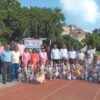16th ASER (Rural) report released online on November 17, 2021
Every year from 2005 to 2014, and then every alternate year till 2018, ASER has reported on the schooling status of children in the 5-16 age group across rural India and their ability to do basic reading and arithmetic tasks. Last year, COVID-19 interrupted this trajectory, along with so much else. But with schools being closed since March 2020, understanding the effect of the pandemic on schools, families and children was crucial. To address the need for large scale nationally representative data on the impact of the pandemic on children’s education, in 2020, ASER developed an entirely new design, consisting of a phone-based survey that explored children’s access to learning opportunities.
With the pandemic extending into yet another year, field-based survey operations were still not possible on a national scale. As a consequence, ASER 2021 followed the same format of a phone-based survey. Conducted in September-October 2021, eighteen months after the first lockdown, the survey explores how children in the age group of 5-16 studied at home since the onset of the pandemic and the challenges that the schools and households now face as schools reopen across states.
ASER 2021 was conducted in 25 states and 3 Union Territories. It reached a total of 76,706 households and 75,234 children in the age group of 5-16 years, as well as teachers or headteachers from 7,299 government schools offering primary grades.
ASER 2021 FINDINGS:
SCHOOL ENROLLMENT PATTERNS
Enrollment data from ASER 2021, 2020 and 2018 show that:
- At an all-India level, there has been a clear shift from private to government schools: For children in the age group of 6-14, enrollment in private schools has decreased from 32.5% in 2018 to 24.4% in 2021. This shift is seen in all grades and among both boys and girls. However, boys are still more likely to be enrolled in private schools than girls.
- No change in children aged 6-14 not enrolled in school: The proportion of children not currently enrolled in school increased from 1.4% to 4.6% in 2020. This proportion remained unchanged between 2020 and 2021.
- More older children in school than ever before: Among older children in the age group of 15-16, an increase in government school enrollment from 57.4% in 2018 to 67.4% has been driven by a marked decline in the proportion of out of school children in this age group, from 12.1% in 2018 to 6.6% in 2021, as well as by decreasing private school enrollment.
- There is a fair amount of variation in enrollment at the state level. The national increase in government school enrollment is driven by large northern states like Uttar Pradesh, Rajasthan, Punjab and Haryana and southern states like Maharashtra, Tamil Nadu, Kerala and Andhra Pradesh. In contrast, in many northeastern states, government school enrollment has fallen during this period, and the proportion of children not enrolled in school has increased.
Time will reveal if these patterns constitute a transitory phase, as schools reopen across states; or whether they will become a permanent feature of schooling in rural India.
TUITION
The ASER survey routinely collects data on paid private tuition classes that children take to supplement their education.•
- Big increase in children taking tuition: At an all-India level, in 2018, less than 30% children took private tuition classes. In 2021, this proportion has jumped to almost 40%. This proportion has increased across both sexes and all grades and school types.
- Increase in tuition-taking highest among the less advantaged: Taking parental education as a proxy for economic status, the proportion of children with parents in the ‘low’ education category who are taking tuition increased by 12.6 percentage points, as opposed to a 7.2 percentage point increase among children with parents in the ‘high’ education category.
- Fewer children whose schools have reopened are taking tuition: Some differences are visible in the proportion of children taking tuition by school reopening status, with tuition classes more common among children whose schools were still closed at the time of the survey.
- Tuition is up across the country: The incidence of tuition has increased across all states except Kerala.
ACCESS TO SMARTPHONES
Smartphones became the predominant source of teaching-learning when schools shut down and moved to a remote model of teaching-learning last year, giving rise to concerns about the most marginalised being left behind.
- Smartphone ownership has almost doubled since 2018: The availability of smartphones has increased from 36.5% in 2018 to 67.6% in 2021. However, more children in private schools have a smartphone at home (79%) as opposed to government school going children (63.7%).
- Household economic status makes a difference in smartphone availability: As parents’ education level increases (a proxy for economic status), the likelihood that the household has a smartphone also increases. In 2021, over 80% children with parents who have studied up to Std IX or higher had a smartphone available at home, as compared to just over 50% children whose parents had studied till Std V or less. However, even among children whose parents are in the ‘low’ education category, over a quarter bought a smartphone for their studies since March 2020.
- Smartphone availability does not translate into access for children: Although over two-thirds of all enrolled children have a smartphone at home (67.6%), over a quarter of these have no access to it (26.1%). There is also a clear pattern by grade, with more children in higher classes having access to a smartphone as compared to children in lower grades.
LEARNING SUPPORT AT HOME
ASER 2021 followed up on the questions asked in ASER 2020 about whether the child is provided learning support at home and who is providing it.
- Learning support at home has decreased over the last year: The proportion of enrolled children who received learning support at home has decreased from three-quarters of all enrolled children in 2020 to two thirds in 2021, with the sharpest drops visible among children in higher grades.
- School reopening is driving decreasing support: Among both government and private school going children, those whose schools have reopened get less support from home. For example, 75.6% private school going children whose schools have not reopened receive help at home as opposed to 70.4% whose schools have reopened. The reduction in help is driven largely by less support from fathers.
ACCESS TO LEARNING MATERIALS
ASER 2021 followed up on the questions asked in ASER 2020 about whether children have textbooks for their current grade and whether they received any additional materials from their school teachers in the week prior to the survey (reference week). These could take the form of traditional materials like worksheets in print or virtual form; online or recorded classes; and videos or other activities sent via phone or received in person. For children whose schools had reopened, these materials could also include homework given by the school.
- Almost all children have textbooks: Almost all enrolled children have textbooks for their current grade (91.9%). This proportion has increased over the last year, for children enrolled in both government and private schools.
- Slight increase in additional materials received: Overall, among enrolled children whose schools had not reopened, 39.8% children received some kind of learning materials or activities (other than textbooks) from their teachers during the reference week. This is a slight increase over 2020 when 35.6% of children received learning materials in the reference week.
- More children in reopened schools received learning materials: In the reference week, 46.4% of children in reopened schools received learning materials/activities as compared to 39.8% of children whose schools had not reopened, mainly because of the inclusion of homework in reopened schools.
POLICY IMPLICATIONS
As schools reopen after 18 months of lockdown, it is essential to understand the impact of school closures so that policies to address these issues can be formulated accordingly. Some overarching policy implications from ASER 2021 are as follows:
- Enrollment: The enrollment of children in government schools has increased notably over the last two years. Government schools and teachers need to be equipped to deal with this influx.
- Building on family support: Family support has reduced since 2020 as schools reopen, but remains significant especially for early primary grades. Parental engagement with children’s learning can be integrated into planning for learning improvement, as advocated by the National Education Policy. “Reaching parents at the right level” is essential to understand how they can help their children.
- “Hybrid” learning: Children are doing a variety of different activities at home; many of these are provided by family members and private tutors in addition to schools. Effective ways of “hybrid” learning need to be developed that combine traditional teaching-learning with newer ways of “reaching-learning”.
- Tuition: The proportion of children attending private tuition classes has shot up since 2018 during an extended period of school closures and uncertainty. This might lead to a bigger learning gap between students who can and cannot afford paid tuition.
- Mediating the “digital divide”: Expectedly, children from families who had low education and also did not have resources like smartphones had less access to learning opportunities. There is evidence of effort even in these households: parents have been purchasing smartphones specifically for their children’s education. However, these children will need even more help than others as schools reopen.
- Smartphone access: ASER 2021 confirms that even if there is a smartphone in the family, children often do not have access to it. This finding needs to be taken into account as future plans are made for remote learning or the use of digital content and devices.

















Add comment